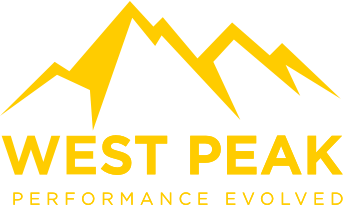How to Address Burnout as a Leader: Discover 5 Proven Strategies
As the year draws to a close, many leaders, entrepreneurs, and professionals face the unavoidable spectre of burnout. It’s not just a personal issue but a leadership one too. As leaders, it’s our responsibility to not only manage our own stress but to spot it in our teams and take action before it escalates.
But how can we be proactive? How can we lead with empathy and ensure our teams remain motivated and resilient during the most challenging periods?
Here’s your cheat sheet to help navigate end-of-year fatigue, address burnout head-on, and come out stronger as a leader. Let’s explore five proven strategies to prevent burnout, both for you and your team.
1. Foster Open Communication: Are You Talking About Burnout?
How often do you have conversations about stress and workload with your team?
Open communication is the foundation of a strong team dynamic. By creating a safe space where your team can discuss their stressors, workload, and general well-being without fear of judgment, you make burnout easier to spot—and tackle—before it becomes debilitating.
- Practical Steps:
- Make sure your regular one-on-ones focus not just on performance but on well-being. Ask open-ended questions like, “How are you managing your workload?” or “How are you feeling about the team’s current pace?”
- Create forums or channels where team members can raise concerns or suggest ways to improve workflows. Whether it’s through a Slack channel, an anonymous survey, or even weekly debriefs, encourage feedback.
When your team feels safe to speak up, you can catch burnout before it happens and make real-time adjustments that matter.

2. Promote Work-Life Balance: Are You Leading by Example?
When’s the last time you encouraged your team to disconnect after hours?
Work-life balance isn’t just a corporate buzzword; it’s a genuine need, especially when people feel overwhelmed. As a leader, you set the tone. If you’re sending emails at midnight or scheduling meetings late in the day, it signals to your team that constant availability is expected.
- Practical Steps:
- Encourage your team to set boundaries, like avoiding emails after work hours and taking their full vacation days. Reinforce that disconnecting from work leads to more productivity when they return.
- Lead by example. Don’t just preach work-life balance—live it. If your team sees you logging off at a reasonable hour, they’ll feel more comfortable doing the same.
By respecting your own boundaries, you help foster a culture where people can unplug without guilt, allowing them to return with renewed energy.

3. Recognise and Reward: How Often Are You Celebrating Wins?
Does your team feel appreciated?
Recognition isn’t just about handing out bonuses or promotions. In fact, the small, regular acts of appreciation often carry the most weight. A simple thank-you, a quick team shout-out, or acknowledging someone’s hard work in a meeting can go a long way.
- Practical Steps:
- Make a habit of celebrating small wins each week. It could be as simple as calling out someone’s extra effort during a team meeting or sending a group email recognising milestones.
- Set up weekly “shout-outs” where team members can celebrate each other’s successes, whether personal or professional.
When you make recognition a part of your culture, you help to boost morale and remind your team that their contributions matter—even when things get tough.
4. Provide Stress Management Resources: Do You Have Tools in Place?
What resources are available to your team when they need to manage stress?
Many companies now offer wellness programs, meditation sessions, or mental health resources, but how accessible and visible are these tools to your team? Providing resources isn’t enough—you need to make sure your team knows about them and feels encouraged to use them.
- Practical Steps:
- Share mental health and stress management resources in a visible way—whether through Slack, in team meetings, or via email.
- Introduce wellness programs such as guided meditation or stress-relief workshops. It doesn’t have to be a formal offering; even suggesting podcasts or wellness apps can be helpful.
Offering the right tools to manage stress signals to your team that you take their well-being seriously and that it’s okay to ask for help when needed.
5. Encourage Professional Growth: Are You Investing in Your Team?
How can professional growth help combat burnout?
Sometimes, burnout stems from stagnation. If your team members feel like they’re not growing or developing, it can lead to frustration and a lack of motivation. Offering opportunities for learning, development, and career advancement is a powerful way to keep them engaged and excited about their work.
- Practical Steps:
- Provide training opportunities, whether through workshops, online courses, or mentorship programs. Regularly ask your team what skills they want to develop and offer the resources they need.
- Encourage cross-training and job shadowing within the company, giving employees the chance to explore other areas of the business.
When your team feels like they’re growing, they’re less likely to burn out because they have something to work toward. Professional growth can be one of the best antidotes to burnout.

Harnessing Leadership Empathy: Final Thoughts
Leadership isn’t just about hitting KPIs and meeting deadlines—it’s about looking out for your team, especially when burnout threatens to derail progress. By fostering open communication, promoting balance, recognising efforts, providing resources, and encouraging growth, you’re building a resilient team that can handle challenges without losing its spark.
As the year comes to an end, remind yourself and your team: Burnout doesn’t have to be inevitable. With the right strategies, we can navigate the busiest times with empathy, strength, and renewed focus.
Watch our ‘How they lead’ podcast
Subscribe to our Podcast
Hosted by our very own Ben Stocken and Benjamin Wade our ‘How They Lead’ podcast aims to evolve the way people perform in leadership roles by showcasing a variety of high performance interviews with people from Patrick Kershaw from The RAF Red Arrows to CEO’s like Steve Phillips who help large brands like Pepsi, Mars and Unilever.
Get one step ahead – Click below to subscribe.










